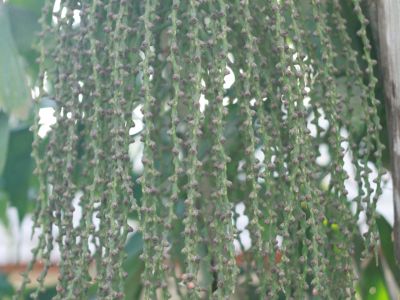Fishtail palm houseplants are a beautiful and interesting addition to sunrooms, patios, or any brightly lit indoor room. Keep reading to find out how to grow fishtail palms.
How to Grow Fishtail Palms
Growing fishtail palm trees indoors is relatively easy as long as you provide the right conditions. When you first purchase your indoor fishtail palm plant, it’s important to inspect the root structure. If the roots are tightly wound or seem out of control, it’s necessary to transplant the palm. Choose a container that is 2 inches (5 cm.) bigger in diameter than the store pot and fill it with lightweight soilless planting media. In order to thrive, an indoor fishtail palm plant requires night temperatures of 60 degrees F. (15 C.) and daytime temperatures of 70 to 80 degrees F. (21-27 C.). In the winter, the palm does best between 55 and 60 degrees F. (10-15 C.). Cooler temperatures give the palm time to rest before the growing season begins. Don’t place your palm plant in temperatures below 45 degrees F. (7 C.), as it will not survive. The best spot for your palm is a southeast or west-facing window, where plenty of light will shine. Bright, indirect light is best, although fishtail palms will survive in almost any type of light. If you plan to move your palm outdoors during the summer months, it’s best to keep it away from direct sunlight.
Fishtail Palm Care
As with any tropical plant, the fishtail palm requires high humidity and must be kept moist at all times. Fill a spray bottle with water and mist the palm several times a day to increase humidity. You can also use a humidifier in the room where you place your palm. If the palm foliage begins to yellow, it may be due to lack of humidity. Most fishtail palms require a weekly water during the spring and summer and twice per month in the winter when the plant is dormant. Do not splash water on the foliage as it may induce disease.
